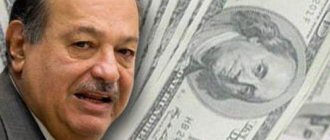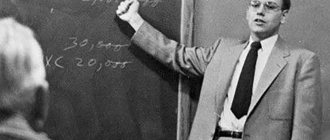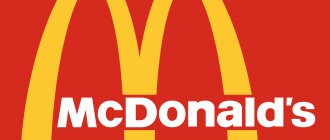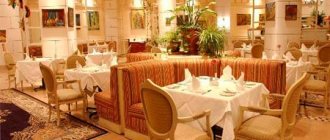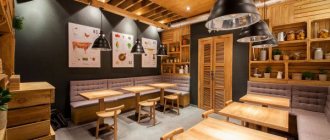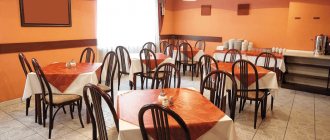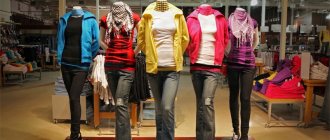Today McDonald's is the most popular representative of the fast food industry in the world. This is a place for family celebrations and romantic dates, meetings with friends and just a quick snack at lunchtime. At the same time, the presence of McDonald's eateries in our lives has become so familiar, and the system of their work and service is so flexible and streamlined, that it is difficult for us to imagine that this was not always the case.
Meanwhile, the founder of McDonald's, whose biography is replete with not only successful ideas and fulfilled desires, but also a series of failures and crises, at one time made an incredible amount of effort to keep this system safely afloat. Of course, we are not only talking about Ray Kroc, who managed to adopt and improve the high-speed service system in the McDonald's restaurant chain. We are also talking about those huge teams of workers who worked in this system. And of course, about the brothers Dick and Maurice McDonald, whose name and technology Ray Kroc borrowed in his business.
Founder of McDonald's
The biography of Ray Kroc (1902-1984), an American businessman, the pioneer of fast food restaurants, is proof that you should always and at any age believe in success, despite the various vicissitudes of fate. Work on organizing the McDonald's chain began during Ray's advanced years. By that time, he already had several serious physical illnesses (one of which was diabetes). However, this did not stop the entrepreneur in his career. Activity, creativity and discipline are the main components of Ray Kroc's success.
Carier start
Ray Kroc was born on October 5, 1902 in Illinois (Chicago). He was the eldest of three children. The difficult financial situation in the family did not give the boy the opportunity to get a good education (Ray completed only ten classes). However, young Kroc believed that hard work would ultimately lead him to success. He tried to start his first business at the age of 15, selling musical instruments and sheet music with his friends.
After returning from the front (during the First World War), Kroc got married and began working as a salesman of paper cups. During this period, his entrepreneurial spirit and creative approach to business began to emerge. So, the future founder of McDonald's comes up with the idea of organizing water delivery to your home. However, his idea is not supported. Then Kroc arranges the first trial delivery of water for free. This marketing ploy not only worked, but was a huge success. Kroc's next invention was the multimixer, a device that allows you to whip up five cocktails at once (1937). Ray even starts his own business selling multifunctional mixers. However, it took two years before the product gradually began to conquer the market.
Meet McDonald's
In 1954, Kroc met the McDonald brothers, Dick and Maurice, who owned a small restaurant in San Bernardino (California). This establishment used eight of Ray's multimixers. But this is not what attracted the businessman’s attention. A feature of the restaurant was a system of high-speed customer service: serving fried potatoes, hamburgers, milkshakes, etc. For example, 40 milkshakes were prepared at the same time. High-speed service was built through a production line for servicing orders. In addition, all dishes were inexpensive and therefore accessible to the general public. The restaurant itself was clean and tidy; all employees wore uniforms, which also made a positive impression.
What he saw surprised Kroc so much that he invited the McDonald brothers to collaborate. Dick and Maurice refused to expand production. But they agreed to an agreement according to which Kroc received the right to replicate McDonald’s business using their name, and they received 0.5% of the revenue.
The rebirth of McDonald's
In the process of implementing a new type of eatery, Ray is improving the high-speed service system. Now each employee had to perform strictly one operation. Since the menu included a fairly limited number of dishes, such a move was quite justified. In addition, strict discipline was required from all workers. The founder of McDonald's loved to repeat a phrase that later became famous: “Man in himself is nothing. The main thing is organization."
Kroc also used precise calculations in cooking. For example, a hamburger patty was made to strict specifications: weight - 1.6 ounces (about 45 g), diameter - 3.875 inches (about 10 cm), fat content - no more than 19%, etc. All burgers were the same size and high quality. In order to maintain the accuracy of the production process, Croc even creates a special laboratory. And in 1961, the founder of McDonald's conducted classes in a special training program (the so-called Hamburger University). New scientific methods for successfully running a fast food restaurant were introduced to licensees and vendors.
Ray introduces white army-style uniforms for his employees. The discipline in the organization also resembled that of the army. By the way, this was the main reason why Krok did not hire women at first, fearing amorous affairs that could disrupt the strict military order. Subsequently, girls were still allowed to work, but they preferred to hire less attractive ones.
In 1961, the McDonald brothers agreed to give Kroc full ownership of their brand, giving him freedom of management. It should be noted that they valued the letter “M” (the famous McDonald’s logo) at $2.7 million.
The history of McDonald's: from loyal fans to high-profile litigation
They introduced a self-service system at the counter, the kitchen was converted for mass production and worked on the principle of a conveyor belt. The menu, compared to today's, was quite meager: a hamburger, a cheeseburger, three types of soft drinks, milk, coffee, pies, fries and chips. In some ways, California has experienced a “restaurant revolution.” For the first time in the history of the restaurant business, visitors did not sit at tables waiting for orders, but served themselves.
The First Golden Arch and the McDonald's Bible
After some time, there was simply no end to clients; the brothers’ income exceeded 350 thousand a year. They began to be talked about throughout California, written in newspapers and magazines. Their small restaurant became one of the most visited places. True, the idea of expanding such a successful business did not belong to McDonald's, but to entrepreneur Ray Kroc, who at that time was on the verge of ruin. Kroc suggested that the brothers expand their business by selling franchises and opening a chain of restaurants. In 1955, Kroc founded a franchise company called McDonald's System, Inc. And on April 15, 1955, the first “golden arch” appeared in the city of Des Plaines (Illinois, USA), writes the Internet publication forbes.by.
In 1958, the first instructions appeared in McDonald's, where on 75 pages the procedure for preparing food and the rules for communicating with customers were described in detail. To date, this book contains more than 700 pages; the restaurant workers themselves call it the “McDonald's Bible.”
In 1960, the company was renamed McDonald's Corporation. At first, Kroc could not boast of too much income: in a year he managed to sell only 18 franchises. The “franchise boom” occurred after the right to open the next McDonald’s restaurant was acquired by journalist Sanford Agate, whose income after two years of “fast food” activity exceeded Kroc’s income. It was then that many entrepreneurs saw McDonald's as a chance for successful business development. The number of people wishing to open another restaurant that brings in fabulous income has increased sharply.
In 1961, Kroc bought the company from the McDonald brothers for $2.7 million. He refused to hire women because he believed that their presence would reduce productivity due to the amorous advances of men. True, in 1968 such a discriminatory decision had to be canceled, fashiontime.ru writes.
Billionth Hamburger
In 1963, the company produced one million hamburgers per day. At the same time, during one of the popular television shows, Kroc sold the billionth hamburger. In 1965, more than 700 restaurants were opened in the United States, and the chain acquired a recognizable symbol - Ronald McDonald the clown. However, in Japan he is known as “Donald McDonald”. This is due to the fact that the Japanese find it quite difficult to pronounce the letter “r”.
Today, there are more than 31,000 restaurants in 120 countries operating under the McDonald's brand in the world. At the same time, the assortment includes both classic dishes (burger, French fries, cheeseburger) and those characteristic of each country. For example, in Germany and Spain you can find beer on the menu, and in Hong Kong there are specific rice burgers.
In Russia, the first McDonald's opened in 1990. On the first day of operation, the restaurant on Pushkin Square in Moscow served more than 30 thousand visitors, setting a world record for the first working day in the history of McDonald's. Previously, the world record belonged to a Budapest restaurant - 9 thousand 100 visitors.
In January 2010, she announced the appointment of a new president. It was Don Thompson, who previously headed one of the network’s divisions. Thompson, 46, began his career at McDonald's back in 1990 as an electrical engineer, The New York Times reports.
Fans and critics
McDonald's fans can be found not only among ordinary visitors, but also among the staff. So, last year one of the McDonald's employees celebrated perhaps the most unusual anniversary. Leonard Rhomberg, 68, worked at the popular network for 50 years, ABC reports.
However, in addition to desperate workers and lovers of “snack on the go,” the popular “fast food” also has opponents. In 2008, Paul McCartney called on his fans to boycott the famous chain's eateries. The fact is that in one of the McDonald's restaurants in Liverpool, portraits of former members of the cult group The Beatles, including McCartney himself, were placed to attract customers.
However, claims were made against McDonald's for a variety of reasons and in many countries, most of all in the USA. In 2008, American Philip Sherman sued McDonald's, demanding $3 million because images of his naked wife appeared on the Internet after he left his mobile phone containing the photos at one of the fast food establishments.
One cannot help but recall the most high-profile trial, called the “McDonald's Coffee Case.” It flared up in February 1994, after 79-year-old American Stella Liebeck received a third-degree burn from hot coffee. The company compensated for the damage by paying 640 thousand dollars. It was after this incident that signs about the dangers of hot coffee appeared on the cups, reports the Internet publication newsru.com.
In Russia, there have also been a number of complaints about the popular network. For example, in May 2004, Muscovite Olga Kuznetsova filed a lawsuit after she received burns from coffee spilled over herself. The woman asked to recover 900 thousand rubles from the restaurant as moral compensation. But the case was never brought to an end: in November 2006, the court terminated the proceedings on Kuznetsova’s claim.
In 2003, a Florida family sued, claiming that a McDonald's bun had ruined their family home. The plaintiffs claimed that in one of the restaurants they were sold a bun that “damaged the teeth of the head of the family, which, in turn, disturbed the peace and family happiness of his wife.”
In 2004, the film “Super Size Me” was released, directed by Los Angeles resident Morgan Spurlock with his own funds. For a month, Spurlock regularly ate at McDonald's, as a result of which he gained a lot of weight. The film was a huge success in the USA and other countries. True, the Australian branch of McDonald's, fearing for the company's reputation, criticized Sparlock, writes sostav.ru.
The material was prepared by the online editors of www.rian.ru based on information from RIA Novosti and open sources
The first Big Mac
The high productivity of Kroc's restaurants, which could hardly have been distinguished by the first McDonald's, nevertheless had its drawbacks. For fear of slowing down the distribution line, Ray was forced to refuse to add new dishes to his menu. Gradually, visitors began to complain about the monotony of the diet - they were tired of eating the same foods every day. All attempts to improve the quality of existing dishes have led nowhere. And this despite the fact that more than $3 million was spent on the secret of special frying of potatoes alone!
Then the founder of McDonald's tried to introduce dessert dishes (Bohemian cakes, strawberry layer cake, etc.) into the assortment of snack bars. However, this idea failed in the same way as the idea of selling special meatless hamburgers for Catholics on Fridays.
The situation was saved by one of Kroc's employees, Jim Delligatti. At his own risk, he offers a new hamburger - a double-decker, with various additives and a special sauce. So, in 1967, the first Big Mac appeared on the outskirts of Pittsburgh. Diners liked the new dish so much that after just two months, sales increased by 12%. Subsequently, the Big Mac became one of the most popular dishes of the McDonald's chain. Following this, new additions to the menu include the Egg McMuffin, Big Roast and Apple Pie.
Historical reference
Initially, the history of McDonald's was associated directly with the biography of the company's founder. At the same time, Ray Kroc partially began to lose his own individuality - he so successfully personified the success of his company. The biographical stories used, despite their rather superficial nature, were romantic stories, which clearly contributed to the promotion of the McDonald's chain.
Interestingly, one of the reasons why the founder of the McDonald's chain decided to use someone else's name in his business was that his own surname could not match the image of the fast food restaurant chain, since it was consonant with the word rogue ("swindler" ).
As for internal work, he prefers to maintain corporate anonymity. Thus, executive management, for example, tries to avoid participating in all kinds of industry associations and industrial exhibitions. McDonald's also refuses to give interviews to the business press. As John F. Love points out, the outside of fast-food chains is so commonplace in everyday American life that the inside job is taken for granted.
McDonald's as a symbol of Russia's national catastrophe
From the very beginning, the idea struck me with its crystal clear, unclouded stupidity. Only a person infinitely far from Russia could think that the events of the early 90s have at least some nostalgic meaning for us.
Obsession with your loved one is very often harmful. And both for people and for companies. Especially American ones. Although it is generally very American to think that the whole world revolves around you.
And McDonald's has a special role in this sense. For an American, civilization begins only where you can buy a standard Big Mac and French fries. All other territories are conditional Africa.
The desire of the Russian McDonald's to celebrate the 30th anniversary of the opening of the chain's first restaurant in the USSR is the innocence of a Protestant missionary who is confident that he brought the light of divine revelation to the natives.
Naive American missionaries this time were going to arrange a big holiday for the Russian natives with (almost) free distribution of food and balloons. announced that on January 31, on its anniversary, the company’s famous first restaurant on Pushkin Square will sell everything at 1990 prices. Big Macs cost 3 rubles 75 kopecks, and a cheeseburger costs 3 rubles.
From the very beginning, the idea struck me with its crystal clear, unclouded stupidity. Only a person infinitely far from Russia could think that the events of the early 90s have at least some nostalgic meaning for us. Rather, exactly the opposite.
For McDonald's headquarters in Chicago, 1990 is simply the date of entry into a new market. For us, this is the time of the collapse of the USSR. In our memory, the opening of the American diner on Pushkin Square and our national catastrophe are blurred together to the point of indistinguishability.
The huge line of Soviet citizens at the first McDonald's became one of the symbols of this disaster.
It was not for nothing that it was compared to the other most famous queue in the USSR - to the Lenin Mausoleum. Both of these truly historical objects were pagan in content.
Worship of the mummy of the leader of the world proletariat was one of the most important rituals for the Soviet country for 65 years. McDonald's became a new object of worship, a temple for hundreds of thousands, millions of still Soviet citizens who sought to touch the “real America.”
They didn't drink Coca-Cola from unprecedentedly shaped paper cups. At that moment, it was as if they were taking communion from the Holy Chalice of the New Grail, renouncing everything that connected them with the “damned scoop”, professing the values of the new kingdom of universal prosperity.
After two or three years, this coming kingdom crushed many converts to pieces in the most literal and merciless manner. McDonald's on Pushkinskaya in 1990, like a giant magnet or a portal to another dimension, gathered around itself unprecedented signs of the coming changes.
There, for example, the first gangs of beggar boys appeared. They circled around the crowd all the time. Some were selling their place in line to those who were particularly impatient, others were begging for money for a Big Mac. God knows how they paid back then for these sandwiches with all sorts of freaks who were also drawn there like a magnet.
The idea of arranging a special holiday for the “daring Russians” on January 31, 2020 with the distribution of free American food should have been born in the head of a sophisticated propagandist. Hollywood couldn’t have produced a more telling picture than the crowds of Muscovites and guests of the capital storming McDonald’s again for a free Big Mac.
Five years ago, the strongest Russophobic meme about “pancakes on a shovel” was born, which, by the way, is still in use in Ukrainian public pages. But here everything would be a hundred times fatter and more offensive. It’s hard to say what stopped the management of the Russian McDonald’s at the last moment. But what is certain is that they were one step away from a disaster that could threaten their entire business in Russia.
And, by the way, the question is not completely settled. No one in the company’s office made a statement that the management “considered the action inappropriate and offensive and therefore canceled it.” No, not at all like that.
No one is going to call the action inappropriate. They simply referred to the coronavirus and the recommendations of the Moscow government to refrain from holding mass events.
What kind of recommendations these are is a mystery. Shopping centers seem to be open. Cinemas are open. The restaurants are also full of people. There are no signs of imminent quarantine or even restrictions in Moscow.
No one publicly asked the question while the promotion was being advertised for a week. Neither professional patriots who can smell sedition a mile away, nor deputies who happily expose foreign agents in any guise, nor dedicated defenders of the offended Russian people. Nobody. Everyone was silent...
Why Russian civil society shows blindness and slow reactions in such situations is completely incomprehensible. After all, this is exactly the case when you don’t need to rely on officials. Vice versa. In this situation, the blind official should receive a good kick from society.
Since McDonald's Russia puts on an innocent face and convincingly regrets the coronavirus approaching the Russian capital, we should probably turn to Rospotrebnadzor with a proposal to close all McDonald's in Moscow. Just for medical purposes. In order not to aggravate the epidemiological situation. Moreover, in China, 300 McDonald's restaurants are already closed for this reason.
So what? They themselves said that it is dangerous to eat Big Macs now. OK. We agree. Dangerous.
Sergey Mardan, VZGLYAD
Be sure to subscribe to our channels to always be aware of the most interesting news News-Front|Yandex Zen and Telegram channel FRONT Notes
The story of Trump's impeachment will end on Wednesday
McDonald's for children
Currently, children's playgrounds are actively used in various cafes and eateries. Turning a child's meal into a real holiday is in itself a good marketing move. Children's McDonald's is becoming increasingly popular around the world. And this is not surprising, because what kid doesn’t want to eat delicious food, and even receive a gift in the form of a toy for it!
Each visitor is greeted by the perky clown Ronald McDonald with a yellow letter “M” on his chest (McDonald’s logo). In the playroom, the little birthday boy will find interesting competitions, entertainment and, of course, a Happy Meal with a treasured toy in a bag-chest. By the way, the toy, like in a kinder surprise, is always different (sometimes it turns out to be a cartoon character, for example, minions). In 1987, Disney cartoon characters became Happy Meal toys. Where McDonald's is located, you can always hear children's laughter. It is worth noting that the Happy Meal toy can be purchased separately from the rest of the menu.
However, such a thorough approach to children's recruitment has begun to appear mainly recently. Initially, the toy served simply as a small pleasant addition to food - a sort of little trifle (flying saucer, ball, etc.). The Happy Meal for children includes a chicken burger (bun, cutlet, cabbage), fries and juice. And in 2011, healthy ingredients were added to the children's menu - apple slices and carrot sticks.
Dick Brams is considered the author of the Happy Meal children's lunch. The first such set with the image of a circus trailer on the packaging appeared in 1979 in the USA.
Dividend Aristocrats: McDonald's (MCD)
McDonald's Corporation (MCD) is one of the greatest corporate successes in American history. The company began its journey in 1954, when Ray Kroc and his brothers Dick and Mac founded McDonald's System Inc. McDuck currently has more than 36,000 locations in more than 100 countries around the world. The market capitalization is $95 billion. McDuck is a highly profitable business and returns a large share of its profits to shareholders every year. McDonald's has increased its dividend every year for the last 40 years.
McDuck's profitability over the past 10 years is shown in the figure below:
As you can see, McDuck has been a great investment over the last 10 years. This is the result of coordinated work. McDuck is managed in such a way as to increase its share price all the time - while still paying a decent dividend. The current yield is 3.4%. Further in the article - investment prospects for McDonald's shares at the moment.
McDonald's - business overview
McDuck has an incredible history as a company, but it has faced significant headwinds in the last few years. The first is changes in the US market.
The domestic consumer landscape is changing. Consumers want healthier foods with better ingredients. As the largest company in the world, McDuck is seen as an advertisement for the obesity epidemic in the United States. That's why McDuck made the unusual decision to close more U.S. restaurants than it opened last year. This was the first time McDuck had taken such a step in more than 40 years. This wouldn't be so bad if it weren't for the difficulties overseas. Economic slowdowns in growth markets like China are reducing McDuck's international growth. And McDuck is struggling because of the strong dollar, which is making goods more expensive outside the United States. Approximately 2/3 of the company's revenue is generated outside the United States.
In the long term, McDuck's performance is very good. Over the 10-year period from 2006 to 2020, the company averaged annual earnings per share growth of 8%. However, this profitability masks the difficulties that McDuck later faced. For example, earnings per share are down 9% over the last 5 years. Here's how earnings per share have changed since 2011:
- 2011 - $5.27 per share
- 2012 - $5.36 per share
- 2013 - $5.55 per share
- 2014 - $4.82 per share
- 2015 - $4.8 per share
The good news is that business conditions have improved slightly this year. In the first 9 months of 2020, earnings per share increased by 17%. This is great news for the company, although it should be noted that McDuck's profits have been declining in recent years.
Growth prospects
Two significant catalysts for McDuck's growth are new menu offerings and accelerated franchising activity. Over the past year, McDuck has launched several new menu items, including All Day Breakfast and McPick 2. This was a good decision for McDuck. The fast food industry is highly competitive and new menu offerings are an important driver for consumer retention.
As for the franchise, this was the most important strategic initiative in the last few years. Approximately 82% of McDuck's restaurants are owned through franchisees. The company decided to move away from owning its own restaurants because franchising generates a steady stream of royalties for the company. Additionally, franchisees bear the majority of maintenance and renovation costs. There is still room for this initiative. McDuck aims to franchise 90% of its restaurants.
As they say - not without problems. Moving forward, we still have to contend with tough conditions in the US and a strong dollar. McDuck is investing in menu restructuring and raising employee salaries.
Competitive Advantage and Recession Protection
McDuck has two critical competitive advantages - its brand and its huge size. McDonald's is one of the most valuable brands in history (I wonder how this is valued - who knows, please write in the comments). Its famous golden arches are well recognized throughout the world. According to Forbes, the McDuck brand is in 9th place in terms of value and is valued at $39.1 billion.
The second main competitive advantage is its impressive size. McDuck can purchase resources at a good price and for buyers this is reflected in low prices. It also allows you to pour significant financial resources into advertising to maintain your brand image with consumers.
Moreover, McDuck has a strong balance sheet. This is property and equipment worth $22.8 billion based on the results of the 2nd quarter. McDuck also has $48 billion in treasury shares. McDuck has enormous resources to raise cheap capital, and this gives the company the flexibility to invest in new growth initiatives.
One of the best reasons to own McDuck stock is recession protection. As the largest publicly traded fast food company, McDuck has a very recession-proof business model. This may be because recessions actually increase yields. When the economy slips into recession, consumers tend to skimp on dining out. Instead of going to an expensive regular restaurant, consumers often prefer fast food. For example, during the Great Recession, earnings per share changed as follows:
- 2007 - $2.91 per share
- 2008 - $3.67 per share
- 2009 - $3.98 per share.
The fact that earnings per share grew 37% in the two years following the Great Recession is very impressive. For this reason, McDuck was one of two stocks in the Dow Jones Industrial Average that rose in 2008.
Valuation and profitability expectations
McDuck trades for 21.4 annual earnings. This is above historical averages. Since 2000, the stock has averaged a P\E of 16.5, and McDuck is currently trading about 27% above its 16-year average valuation. For this reason, McDuck appears slightly overvalued given its stagnant financials over the past few years. Investors typically pay more if companies show strong growth. Buying a stock at this price could result in below-average returns in the future. As a result, investors will rely on future earnings and dividend growth. The expected total return is calculated based on the following data:
- 3.5% of dividend yield
- 2-7% of earnings per share growth.
A reasonable profitability assumption for McDonald's would be in the region of 5.5-10% annual profit. The company's overall earnings are difficult to estimate because there are questions about the company's ability to navigate the changing "dining climate" in the US, as well as slowing international growth. The single most important number to keep an eye on is sales growth. As growth continues, so will the company’s business.
Conclusion
Dividend growth investors have many reasons to buy McDuck for the long term. The company is highly profitable and has a number of competitive advantages that protect its profits. There should be no problem maintaining and increasing dividends in subsequent years.
Buying a company at current prices is not a good deal. Investors who want to buy McDonald's stock should wait for the best entry point. On the other hand, McDuck does very well during economic downturns - if you're building a portfolio for a downturn - then McDonald's is definitely worth considering. During recessions, people switch from expensive restaurants to inexpensive McDuck's. This makes McDonald's one of the most recession-resistant stocks.
Original: https://www.valuewalk.com/2016/10/dividend-mcdonald-corporation-mcd/
Opening of the first McDonald's in Russia
In our country, the first McDonald's opened back in 1990, naturally, in Moscow (Pushkinskaya Square). This was the first experience of foreign fast food in Russia. A kilometer-long line of people wishing to “taste the taste of capitalism” formed in front of the restaurant (A. Sitnikov, “4 interesting facts about McDonald’s”). And this despite the fact that the price tags of the newly created imported catering were clearly beyond the means of the average Muscovite - 1.5 rubles. for a hamburger and 3.75 rubles for a Big Mac.
Which is correct - McDonald's or McDonald's?
Greetings, friends! I have a hobby - I like to photograph city views. Ours, someone else's - it doesn't matter. After all, every city is good in its own way.
Looking through the archive of photographs, I found one photo that led me to certain thoughts. See for yourself:
The photo was taken in Penza on Moskovskaya Street in 2013. Nothing has changed since then - the main pedestrian street of Penza is still just as good.
Looking at this image, I wondered: why is McDonald's written without a soft sign? In our city, it is customary to call this establishment McDuck, but the most common pronunciation is the following pronunciation - McDonald's. That's right - with a soft sign.
Try saying both options out loud. Which one is easier to pronounce?
So, I was interested in the question: which is correct - McDonald's or McDonald's? The answer seems obvious (it’s on the sign), but it’s not that simple.
Let's go back to the original name - McDonald's. How do you say this?
"McDonald's" (with a hard "l").
It would seem that there is no arguing here - they translated it into Russian the same way as it is heard in English. But then why is the name Donald (English transcription - donld) in Russian usually used with a soft sign - Donald?
Because this is much more common for us.
But for some reason this rule does not work for McDonald's. Let's continue to figure it out...
When the company opened in Russia in 1990, it was decided to name the Russian restaurant chain exactly that - McDonald's. Writing without a soft sign brings this name closer to the English original, which gives more “solidity”. Thus, in the text you should stick to the “McDonald’s” option, since this is the name of the trademark in Russia.
Interesting fact: in Belarus the trademark is called “McDonald’s” (with a soft sign).
But doesn’t the option with a soft sign have a right to exist in Russia?
In colloquial speech - please! Speak as you please: McDonald's, McDonald's, McDuck, fast food, just Mac - this is not regulated by any rules. But if we are talking about the official name of the McDonald's retail chain in Russia, then everything is clear here - McDonald's! Keep soft signs to yourself.
I hope this article was helpful to you. If you still have any questions, you can ask them in the comments. Subscribe to blog updates and share the article with friends on social networks.
PS One more question: do you like the coffee in this place?
Sincerely, blog author Sergey Chesnokov
Interesting facts about McDonald's
Over the many years of its successful existence, it has accumulated many interesting facts that are probably unknown to most fast food fans. For example:
- According to statistics, the average American eats about four servings of potatoes and three hamburgers each week.
- The McDonald's chain uses white meat from specially bred chickens for its Chicken McNuggets dish. This breed is distinguished by its large breasts and is called “Mr. McDonald”. Also interesting is the fact that thanks to this type, chicken began to be sold not whole, as before, but specially cut into pieces.
- Among American preschool children, 96% immediately recognize Ronald McDonald, the famous clown (the company symbol who convinces the public to eat hamburgers). This is a record percentage of recognition among children - only Santa Claus is higher. Ronald McDonald was created by American actor Willard Scott in 1963, the artist himself first played this role in several advertising projects for the fast food restaurant chain.
However, not all known (and especially little-known) facts characterize the company from the best side.
The world's first McDonald's restaurant.
In 1940, the McDonald brothers were able to afford to open a fast food restaurant in San Bernardino, located at the intersection of Fourteenth and E streets, 50 miles east of Los Angeles on Route 66 from Chicago to Santa Monica. The structure of the building was octagonal in shape with large windows showing the process in the kitchen. In that era, this was unusual and destroyed people’s stereotypes. Near the establishment there were several chairs for customers. And the land area was 600 square feet. The size of the area and restaurant could not compete with the large drive-in chains at that time. But by 1945 the volume of visitors increased several times. Every day more than 300 visitors passed through, served by 20 waitresses. The world's first McDonald's brothers fast food restaurant in San Bernardino, queue. McDonald's was popular with young people, and on weekends there were over 150 cars in the parking lot. The menu had 20 items, of which they were popular: hamburgers, cheeseburgers, pork and beef, charcoal-grilled ribs, pizza, fish. By this time, the income was more than $200,000 and the income was about $50,000 for two people annually. The people of San Bernardino began to revere and respect Mack and Dick, and they began to hold lunches, dinners, meetings and other events with the city's nobility. Among these were the owners of: a club, a newspaper publishing house, a supermarket store and others. The brothers bought one of the most luxurious houses in the city on a hill, consisting of 25 rooms, costing $90,000. They have already admitted to themselves that they have become bored with work, since the process is streamlined, everything works without interruptions, the money itself went into their pockets.
Flavor enhancers
Researchers have found that our brain can concentrate on certain tastes and smells around us, while filtering out most others. With age, due to certain physiological characteristics, the sense of taste decreases. In this regard, much attention in the development of technologies for the McDonald's chain is paid to children and the so-called “products of happiness.” It is assumed that these dishes, first tried in childhood and causing bright positive taste sensations, will be associated by the child with joy and comfort. Subsequently, memories of “happy food” will motivate an already matured person to go to McDonald’s during a period, for example, of depression.
To create the “taste of happiness” formula, various highly paid specialists are involved. Their close attention is primarily aimed at studying the reaction of epithelial cells during exposure to certain flavor enhancers. Statistics show that adult Americans who visited McDonald's as children, wanting to feel happy again, eat an average of four servings of French fries (Schlosser, E. “Fast Food Nation”).
To be fair, it is far from the most abusive company in the field of flavor enhancers. For example, a wide response among pro-life activists was caused by the permission to use cells grown from abortive tissues for taste enhancers.
Odor enhancers
The "flavor" technologies for each McDonald's dish are also kept in the strictest confidence. What is known, however, is that the fast food chain's core scent that its customers love is the product of a complex manufacturing process that was created using special chemical scent enhancers rather than just the aroma of freshly prepared food.
Perhaps it is the knowledge of the technologies for preparing McDonald's main dishes that explains the fact that the company's leaders themselves prefer completely different food to them. Thus, in his memoirs about working at McDonald's, Jeffrey Giuliano, an actor who played the role of the clown Ronald McDonald in an advertising campaign in Canada for a year and a half, says the following: “At first I was amazed that the restaurant management itself does not eat its products! They had a high-quality chef who prepared normal food."
Another well-known character who became so in connection with the won court case against the fast food restaurant chain is chef and TV presenter Jamie Oliver. McDonald's, which claimed that its products were so cheap because of huge bulk purchases of meat, had to admit the true reason for this situation. Thus, according to Oliver, we are talking about the use of low-quality meat raw materials (production waste) in the preparation of dishes, which are subsequently given a marketable appearance due to lengthy chemical processing. Oliver writes that such products can only be used for dogs - such food is simply contraindicated for humans.
It’s interesting that even the world-famous one, who collaborated with McDonald’s from 1987 to 2007 and released a series of Happy Meal lunch toys, ultimately did not renew the contract with him, switching to healthier food. Despite the fact that the fast food sector in the catering industry is a current activity that will be in high demand for a long time, in modern society there are increasingly growing trends towards the development of a healthy lifestyle. And food in this case plays an important role.
Ray Kroc's Franchising Success.
Analyzing the successes and mistakes of its competitors, having extensive experience in trade and communicating with high-level businessmen, Croc built its own franchising system, which is radically different from all others. Almost everyone who sold restaurant business licenses was chasing quick money, high annual income and minimizing costs, while the more enterprising ones organized sales of territories or industrial equipment for their restaurants. Kroc, in turn, strived for sales volume and high quality of service, dreaming that, being anywhere in the country or the world, going to a McDonalds restaurant, he would be fed just as quickly and tasty.
Ray Kroc believed that when ordering a large amount of equipment or food from a supplier, you should not take the discount for yourself; it is better to give it to the restaurant owner. Organizational troubles in supplying restaurants were stopped, and restaurant owners were supplied with the best technical equipment and top quality products at an impressive discount due to the volume of McDonald's restaurant chains. There was even a case, as a manufacturer of 100% fat, which gives the dough greater friability, Smargon Hary (Smargon Hary) offered Ray gratitude for a large number of orders, but Ray replied: “I don’t need your gratitude, I don’t need gifts for Christmas, just make the best 100% fat in all of America.”
Buying, selling McDonalds.
In 1961, Ray Kroc bought McDonald's from brothers Mack and Dick for $2.7 million. Kroc at that time did not own such a significant amount of money, and creditors considered fast food not a profitable investment. Then Ray organized a new company, “Franchise State,” which is engaged in the purchase and lease of land together with McDonald’s for future restaurants.
Thus, the land leased for a restaurant for the future owner, who bought a franchise, for a period of 20 years, at a fixed payment of $700 per month, was subleased at $1,000 per month, and the conditions for purchasing a McDonalds license required a one-time payment of $1,000 $ and a deposit of $10,000, of which $5,000 was returned after 10 years and the rest after the same period. The condition of payment of 1.9% of the turnover of the McDonads restaurant was still maintained. As a result, the owner of the McDonalds restaurant land was Ray Kroc, and the restaurant owners paid the rent for the land. Control over the territory was exercised through ownership and franchising licenses. The advantages of this move are visible to the naked eye:
- Control over restaurant owners.
- Control over the owners of McDonald's, namely Mack and Dick.
- Profit from all sides.
